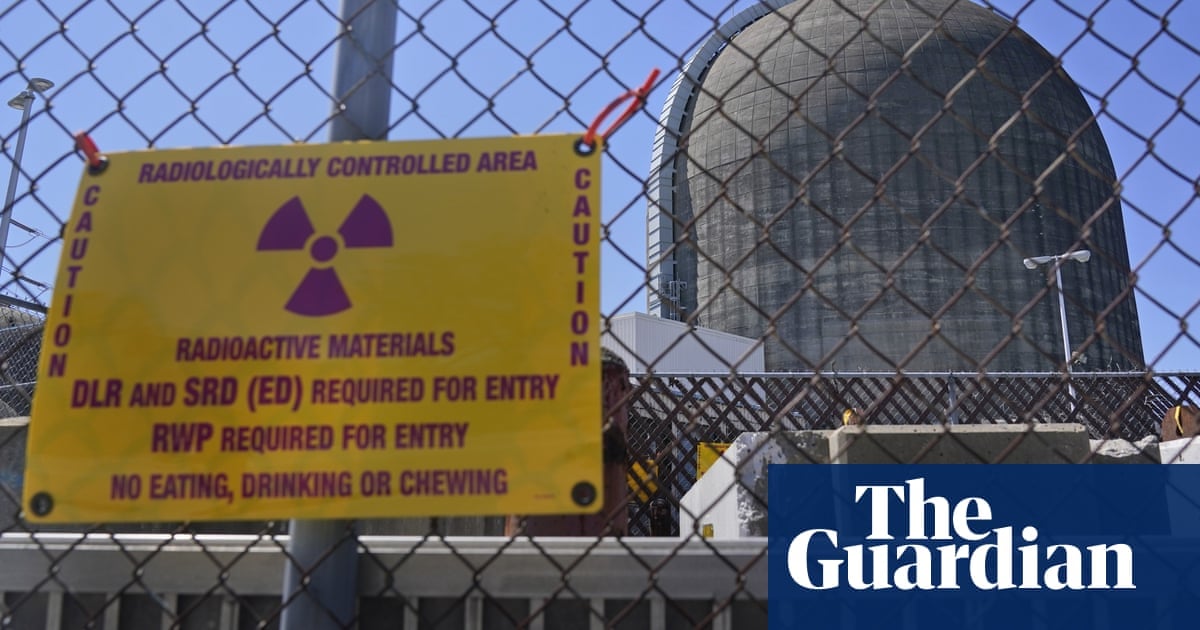Shuttering of New York facility raises awkward climate crisis questions as gas – not renewables – fills gap in power generation
When New York’s deteriorating and unloved Indian Point nuclear plant finally shuttered in 2021, its demise was met with delight from environmentalists who had long demanded it be scrapped.
But there has been a sting in the tail – since the closure, New York’s greenhouse gas emissions have gone up.
Castigated for its impact upon the surrounding environment and feared for its potential to unleash disaster close to the heart of New York City, Indian Point nevertheless supplied a large chunk of the state’s carbon-free electricity.
Since the plant’s closure, it has been gas, rather then clean energy such as solar and wind, that has filled the void, leaving New York City in the embarrassing situation of seeing its planet-heating emissions jump in recent years to the point its power grid is now dirtier than Texas’s, as well as the US average.



The supply and environmental impact of mining rare earth elements (REEs) and other critical minerals used in solar panels and renewable energy technologies vary across different elements:
Supply Constraints
Gallium and Indium: These elements are not rare in the Earth’s crust, but they are typically produced as byproducts of zinc and aluminum mining, which means their supply is limited by the production rates of these primary metals. Their availability is considered more constrained due to the specificities of their mining and production processes rather than their actual abundance in the Earth’s crust.
Tellurium: This element is one of the least abundant elements in the Earth’s crust. It is primarily obtained as a byproduct of copper refining. Its limited availability is a concern for the scaling of cadmium telluride (CdTe) solar panels.
Dysprosium and Neodymium: While these rare earth elements are relatively abundant, their economic deposits are concentrated in specific regions, particularly in China. This geographical concentration creates supply risks related to geopolitical factors, rather than actual scarcity in the Earth’s crust.
Environmental Issues
Mining and processing of rare earth elements and other critical minerals can have significant environmental impacts:
Water Pollution and Toxicity: The mining process for REEs often involves the use of toxic chemicals, which can lead to water pollution if not properly managed. The release of toxic substances can harm local water sources and affect ecosystems and human health.
Radioactive Waste: Some rare earth element deposits are associated with materials that contain naturally occurring radioactive elements such as uranium and thorium. The processing of these elements can result in radioactive waste, posing challenges for disposal and management.
Habitat Destruction: Mining activities can lead to significant alteration of landscapes, destruction of habitats, and loss of biodiversity. This is particularly concerning in areas of high ecological value.
Energy Consumption and Greenhouse Gas Emissions: The extraction and processing of these minerals are energy-intensive, contributing to greenhouse gas emissions, especially if the energy used is derived from fossil fuels.
Yes, there are thorium reactors currently in various stages of development and testing, though large-scale commercial deployment is still in progress. China is notably advancing in this field, moving closer to completing the world’s first thorium reactor. They have been working on an experimental molten salt reactor, which uses thorium as fuel, with construction on a 2-MW prototype reactor nearly finished. The first tests of this prototype were anticipated to begin as of my last update oai_citation:1,China moves closer to completion of world’s first thorium reactor – ANS / Nuclear Newswire.
In addition to China’s efforts, Copenhagen Atomics, a company based in Denmark, is making significant progress toward the mass manufacturing of thorium reactors. They have developed full-scale reactor hardware for molten salt thorium nuclear reactors and have announced plans to have their first reactor operational by 2028 oai_citation:2,Copenhagen Atomics Progress to Mass Manufacturing Thorium Reactors and First Reactor in 2028 | NextBigFuture.com.
These developments highlight the ongoing interest and investment in thorium technology as a potentially safer and more sustainable alternative to traditional uranium-based nuclear power.
I’m not arguing with any of these points and not if it can be done or that it might be less draining on the environment. The reality is that it’s not there and any current project can’t use them. It’s either uranium reactors, wind, solar or hydro (maybe also tides?)
And, like I said, it’s normal that these types of projects are more viable in China with laxer safety and no political roadblocks.
We should halt current efforts with the promise of some better alternative in the future. If currently the cheapest and easiest is solar, we should do that. When newer nuclear reactors price themselves, it can change.
But a promise that newer nuclear reactors might be cheaper and safer is no argument for building a current generation nuclear reactor.